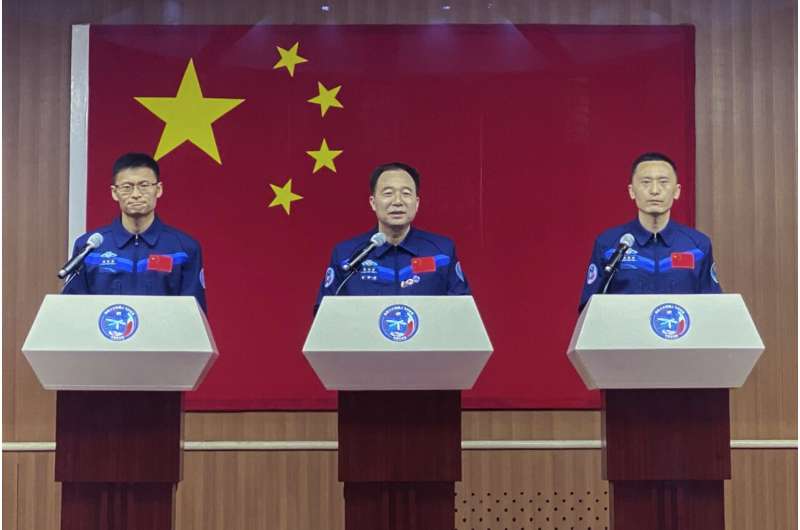Credit: AP Photo/Mark Schiefelbein
The trio being launched aboard the Shenzhou 16 craft will overlap briefly with the three astronauts who have lived on the station for the previous six months conducting experiments and assembling equipment inside and outside the vehicle.
The fresh crew includes a civilian for the first time. All previous crew members have been in the People's Liberation Army, the military wing of the country's ruling Communist Party.
Gui Haichao, a professor at Beijing's top aerospace research institute, will join mission commander Jing Haipeng and spacecraft engineer Zhu Yangzhu as the payload expert.
Speaking to media at the launch site outside the northwestern city of Jiuquan, Jing said the mission marked "a new stage of application and development," in China's space program.
"We firmly believe that the spring of China's space science has arrived, and we have the determination, confidence, and ability to resolutely complete the mission," said Jing, a major general who has made three previous space flights.
China's first manned space mission in 2003 made it the third country after the former Soviet Union and the U.S. to put a person into space.
China built its own space station after it was excluded from the International Space Station, largely due to U.S. objections over the Chinese space programs' intimate ties to the PLA.
Space is increasingly seen as a new area of competition between China and the United States—the world's two largest economies and rivals for diplomatic and military influence. The astronauts NASA sends to the moon by the end of 2025 will aim for the south pole where permanently shadowed craters are believed to be packed with frozen water.
Plans for permanent crewed bases on the moon are also being considered by both countries, raising questions about rights and interests on the lunar surface. U.S. law tightly restricts cooperation between the two countries' space programs and while China says it welcomes foreign collaborations, those have thus far been limited to scientific research.
In addition to their lunar programs, the U.S. and China have also landed rovers on Mars and Beijing plans to follow the U.S. in landing a spacecraft on an asteroid.
Other countries and organizations ranging from the India and the United Arab Emirates to Israel and the European Union are also planning lunar missions.
The U.S. sent six crewed missions to the moon between 1969 and 1972, three of which involved the use of a drivable lunar rover that China says it is now developing with tenders in the private sector.
While America currently operates more spaceports and has a far wider network of international and commercial partners than China, the Chinese program has proceeded in a steady and cautious manner reflecting the county's vast increase in economic power and global influence since the 1980s.
Recommend this post and follow
Sputk's Orbit
Posted by Chuck






No comments:
Post a Comment